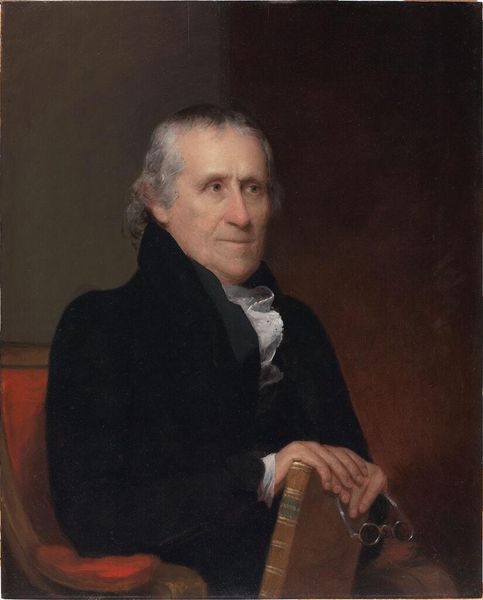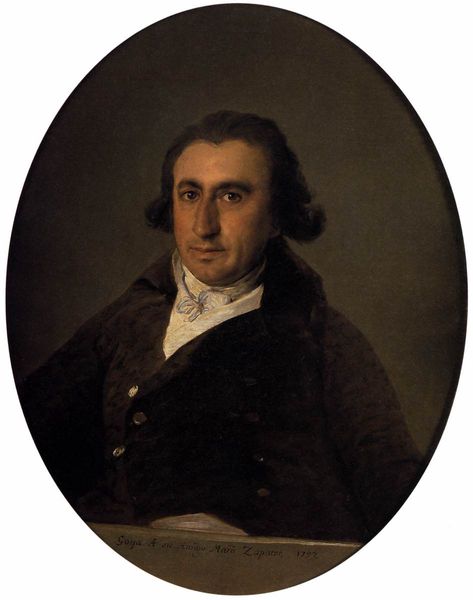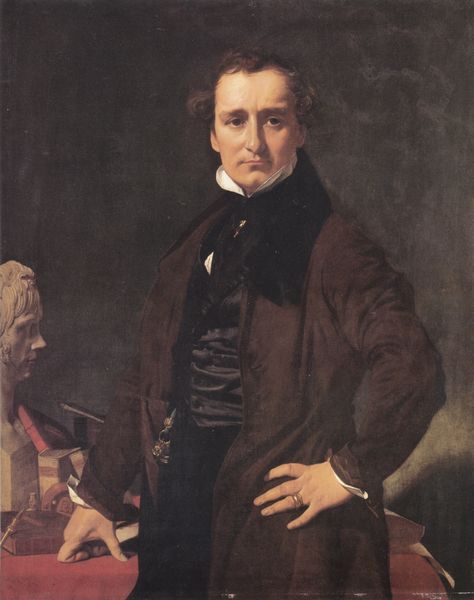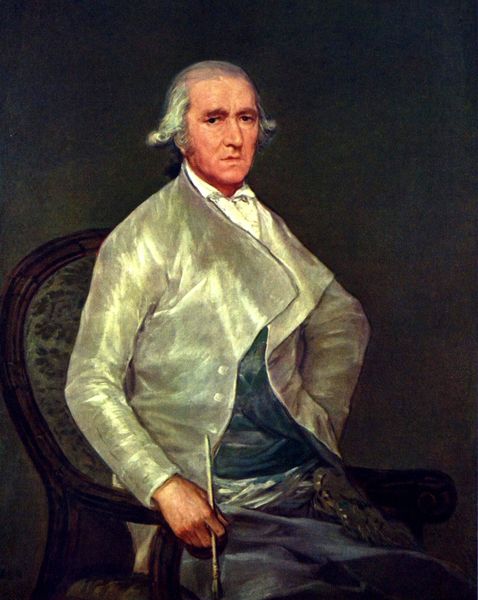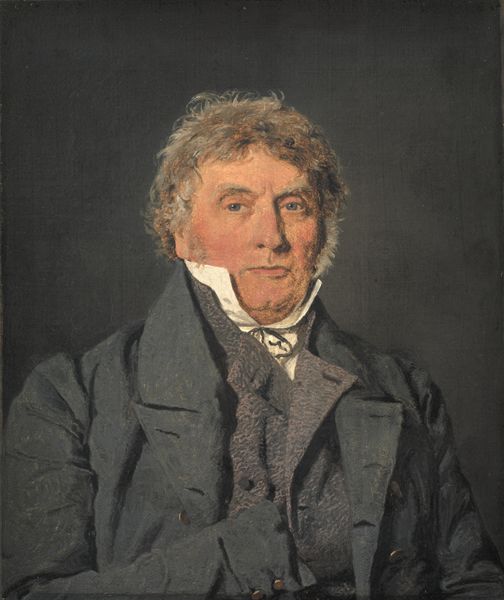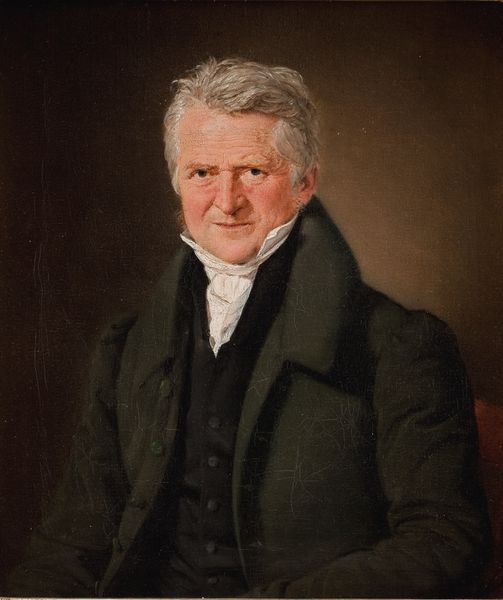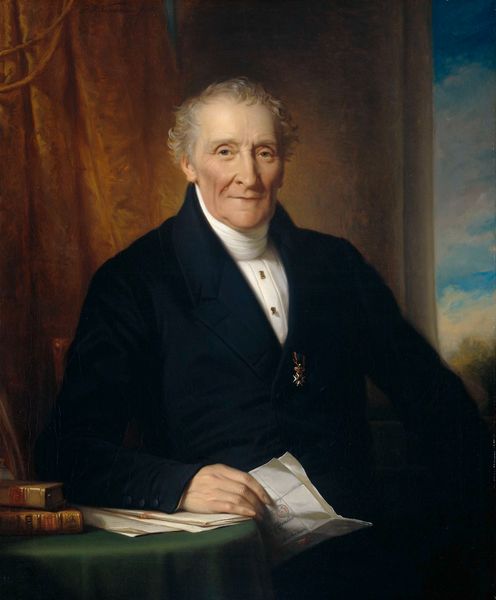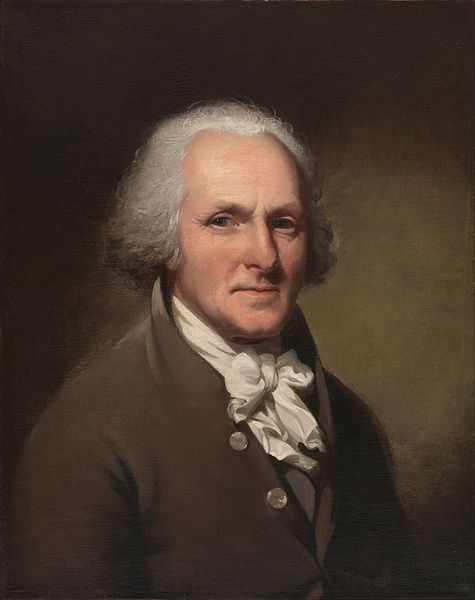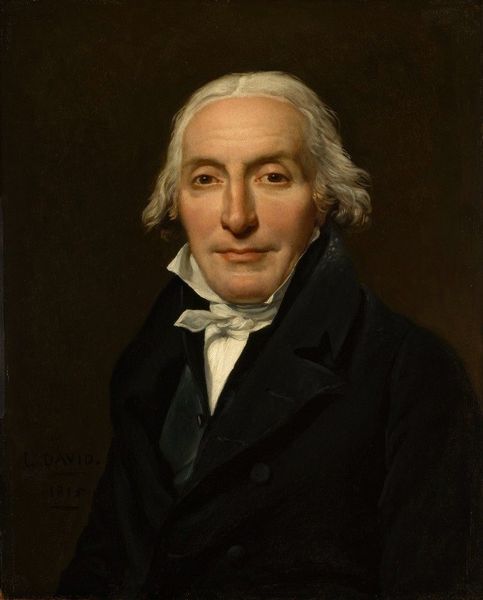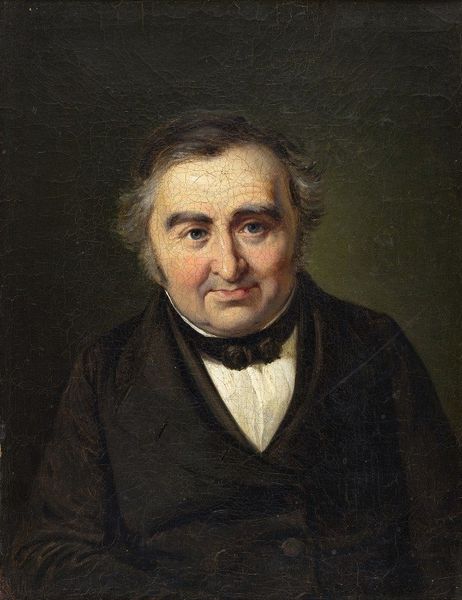
painting, oil-paint
#
portrait
#
portrait
#
painting
#
oil-paint
#
romanticism
#
realism
Dimensions: 116 x 95 cm
Copyright: Public domain
Curator: This is Jean-Auguste-Dominique Ingres’ 1832 oil painting, "Portrait of French Journalist Louis-François Bertin," currently housed in the Louvre. Quite an imposing figure, wouldn't you say? Editor: It certainly is…imposing. The tight crop really puts Bertin front and center, almost forcing a confrontation with his rather weighty presence. The material reality of him is really quite… palpable. Curator: Indeed. And it's through these carefully chosen details that Ingres constructs a portrait not merely of a man, but of a symbol of bourgeois power during the July Monarchy. Look at his hands, clasped with a confident grip—almost like grasping the reins of society itself. Editor: Well, the hands do tell a story. The knuckles are a little rough; they've seen some labor, perhaps, but also leisure, adorned as he is in a velvet vest. I wonder what the textures of those garments were like to the touch, what quality of wool or weave? Curator: Ah, but beyond the surface texture, there's the symbolic texture of the era woven into every fold. The almost unflinching realism points to the rise of the bourgeoisie, turning away from the ornate, frivolous art of the aristocracy towards something more grounded in observable reality. Ingres elevates the modern, the powerful. Editor: Perhaps. But the surface of the paint is so smooth, almost denying its own materiality. It hides the labor. There’s a glossiness there that feels almost…aspirational, maybe denying his material past as much as celebrating his present. Curator: Interesting observation. Yet, even that smoothness, that seeming effortless application, speaks to the idealized image that Bertin wishes to project. This isn’t simply a man, but a representation of the age of industrial and journalistic ascendancy. Editor: That is visible, absolutely, but the longer I look at the man, the more I see the raw materials themselves at play, his waistcoat and heavy dark coat made to highlight his figure. The power is more in his volume and less with his posture. He does sit like someone with the world at his feet. Curator: Precisely, It is through the details Ingres provides which gives viewers like ourselves a window into that historical, industrial symbolism. Editor: It has become so clear looking so deeply. Ingres definitely succeeded, even after all these years. Thank you for pointing out these qualities to me, too.
Comments
No comments
Be the first to comment and join the conversation on the ultimate creative platform.

